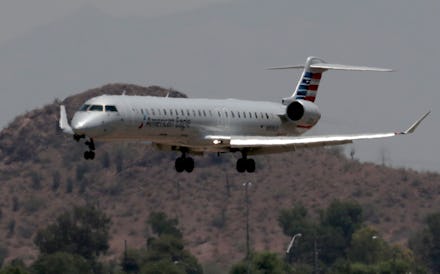Phoenix heatwave causes American Airlines to cancel 50 flights

As temperatures go up, the number of operating flights has gone down.
According to the Arizona Republic, a heat wave in Arizona has forced American Airlines to cancel about 50 flights out of Sky Harbor airport. The Bombardier CRJ aircraft, responsible for many shorter, regional flights, has a maximum operating temperature of 118 degrees, according to American Airlines, the Republic reported, two degrees below the projected temperature of 120 degrees Fahrenheit in Phoenix.
Larger planes that pass through the local airport have higher maximum operating temperatures, at about 126 or 127 degrees, according to the Republic.
On Monday, American Airlines announced the cancellation of 20 flights when the temperature reached 118 degrees Fahrenheit. The canceled flights mostly took place between 3 p.m. and 6 p.m. local time, when temperatures were the highest.
Extreme heat can hamper a plane's ability to take off. Hot air is less dense than cold air and the higher the temperature climbs, the more speed a plane needs to get off the ground. The runways may not be long enough for planes to garner the speed they need to take off.
American Airlines announced that flight changes would be free, the Republic reported.
Aside from light schedules, heat waves of this nature can be detrimental to personal health, as well. According to Phys.org, our internal mechanisms to cool don't work when the temperature goes above 110 degrees. At that point, the only recourse left for the body to cool itself is sweating.
Heat-related deaths can occur during such heatwaves, with people of color and those living in poverty more likely to die from heat-related events.
Phoenix's heat woes may be due to climate change, according to Phys.org. The city, already accustomed to high temperatures, has seen its average temperature rise 1.12 degrees in the last half-century. Maximum temperatures could reach 130 degrees during the summer months by the end of the century.